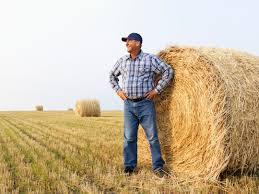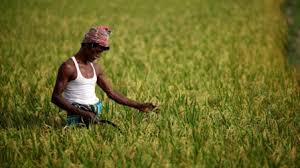The role of financial institutions in light of technological advancements in agriculture lies in evolving principles of farm finance that aim to bring both commercial gains to bankers and social benefits. These principles, developed by institutional agencies, are widely recognized as the “Seven Ps’ of Credit” and hold universal validity.
1. Principle of Productive Purpose in Farm Business
When owned capital is a limiting factor on farms, the credit needs of farmers are diverse, ranging from short-term to long-term loans. This limitation is particularly pronounced on small and marginal farms.
Farmers with tiny holdings often require consumption loans, which large farmers do not need. Without consumption loans, crop loans advanced to small and marginal farmers may not be as productive as intended, as they might be diverted to other purposes. Despite this, institutional agencies often neglect consumption credit.
When loans are diverted, their productivity diminishes, and desired outcomes become elusive. The principle of productive purpose emphasizes that loans should generate incremental income.
To ensure this, short-term loans for small and marginal farmers can be made productive by providing them with income-augmenting assets through term loans. These assets, such as dairy animals, sheep, goats, poultry, or pump sets, enhance overall farm income and improve the productivity of crop loans.
Read Also: 7 Medicinal Health Benefits of Daffodils (Narcissus Plant)
2. Principle of Personality in Farm Business

The ‘Three Rs’ repayment capacity, risk-bearing ability, and returns from investment are key indicators of a farmer’s creditworthiness. Over time, bankers have identified trustworthiness as a critical factor in credit transactions, closely tied to the borrower’s personality.
For instance, a farmer who defaults due to natural calamities is a non-willful defaulter, while a large farmer who defaults despite profitable loan use is a willful defaulter.
The latter’s dishonesty can cripple institutional business. Thus, loan safety depends not only on collateral but also on the borrower’s character. The growth of lending institutions is closely linked to the personality of borrowers.
3. Principle of Productivity in Farm Business
This principle emphasizes that credit should not only increase production from a specific enterprise but also enhance the productivity of other factors involved. For example, choosing hybrid maize over open-pollinated varieties or superior livestock breeds can increase returns and improve the productivity of complementary resources.
Since borrowed capital is scarce, maximizing productivity from every resource is crucial. This principle underscores the importance of selecting the most appropriate enterprises to optimize resource use.
Read Also: Bacterial Canker (Stone fruit trees): Description, Damages Caused, Control and Preventive Measures
4. Principle of Phased Disbursement in Farm Business

Ensuring the proper use of funds is vital in institutional lending. Since no enterprise requires all funds at once, the principle of phased disbursement advocates is distributing loans in phases.
For example, paddy farming requires capital over 4-5 months, sugarcane over a year, and investments like pump sets have different timelines. Phased disbursement ensures productive use of funds and prevents misuse. However, this approach may increase the cost of credit.
5. Principle of Proper Utilisation in Farm Business
Proper utilisation means using borrowed funds for their intended purposes. This depends on the rural climate, including timely access to resources like seeds, fertilizers, and pesticides, as well as technical advice and infrastructure like storage, transportation, and marketing.
Price stability also plays a role in effective fund use. Proper utilisation is achievable only when suitable investment conditions exist.
6. Principle of Payment in Farm Business
This principle focuses on setting repayment schedules for loans. For investment credit, such as irrigation structures or tractors, annual repayments are fixed based on incremental returns, accounting for farmers’ consumption needs.
Crop loans (except for perennial crops) are repaid in lump sums after harvest, allowing farmers to secure reasonable prices. In case of crop failure due to unfavorable weather, repayment periods are extended, and fresh loans are provided to support farm business continuity.
7. Principle of Protection in Farm Business

Given the frequent occurrence of unforeseen calamities in farming, banks cannot avoid lending to farmers. Instead, they demand security for loans to mitigate risks. Institutional agencies adopt safety measures such as insurance coverage, linking credit with marketing, financing against warehouse receipts, and taking securities.
1. Insurance Coverage: Loans for crops and activities like poultry, dairy, and irrigation structures are insured. In case of significant losses, insurance agencies assess damages and indemnify farmers, enabling banks to recover dues.
2. Linking Credit with Marketing or Tie-up Arrangement: By linking credit with marketing, banks ensure loan recovery. For example, a sugarcane grower supplies cane to a factory, which deducts the loan amount from the payment and credits it to the bank.
3. Provision of Finance against Warehouse Receipt: When market prices are unfavorable,farmers can store produce in warehouses. Financial institutions advance loans up to 75% of the produce value based on warehouse receipts, allowing farmers to sell later at better prices.
4. Taking Securities: Banks secure loans through hypothecation or mortgage of assets, ensuring recovery in case of default.
Do you have any questions, suggestions, or contributions? If so, please feel free to use the comment box below to share your thoughts. We also encourage you to kindly share this information with others who might benefit from it. Since we can’t reach everyone at once, we truly appreciate your help in spreading the word. Thank you so much for your support and for sharing!
Read Also: Relationship Marketing Process and Approaches to the Study of Marketing






